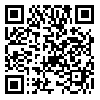Volume 11, Issue 2 (March & April - Special Issue on COVID-19 2020)
BCN 2020, 11(2): 151-154 |
Back to browse issues page
Download citation:
BibTeX | RIS | EndNote | Medlars | ProCite | Reference Manager | RefWorks
Send citation to:



BibTeX | RIS | EndNote | Medlars | ProCite | Reference Manager | RefWorks
Send citation to:
Zeinali M, Almasi-Doghaee M, Haghi-Ashtiani B. Facing COVID-19, Jumping From In-Person Training To Virtual Learning: A Review on Educational and Clinical Activities in a Neurology Department. BCN 2020; 11 (2) :151-154
URL: http://bcn.iums.ac.ir/article-1-1783-en.html
URL: http://bcn.iums.ac.ir/article-1-1783-en.html
1- MD. Department of Neurology, Firoozgar Hospital, Iran University of Medical Sciences, Tehran, Iran.
Abstract:
The new coronavirus virus 2019 (COVID-19) has affected many routine medical activities, including medical education and clinical activities. The social isolation has led to highlighting virtual learning and telemedicine. We present a report of our adoptive procedures taken during the outbreak of COVID-19 in our tertiary healthcare center and compare the current educational and clinical issues with these issues one month before the outbreak. Virtual learning is a useful replacement in this critical situation.
Type of Study: Editorial |
Subject:
Clinical Neuroscience
Received: 2020/05/6 | Accepted: 2020/07/1 | Published: 2020/07/1
Received: 2020/05/6 | Accepted: 2020/07/1 | Published: 2020/07/1
| Rights and permissions | |
 |
This work is licensed under a Creative Commons Attribution-NonCommercial 4.0 International License. |








